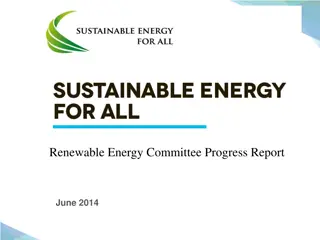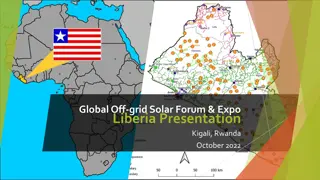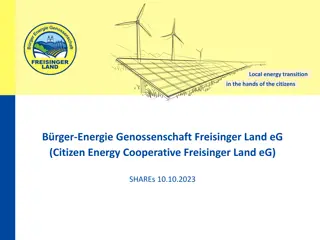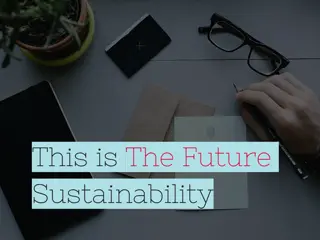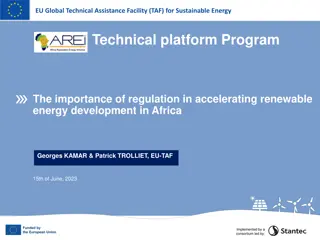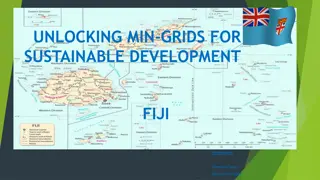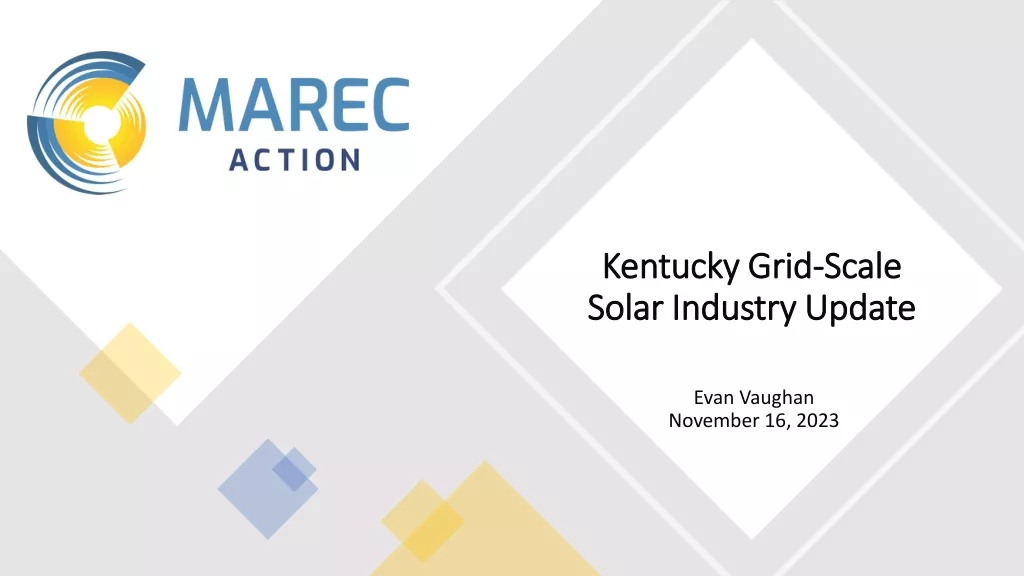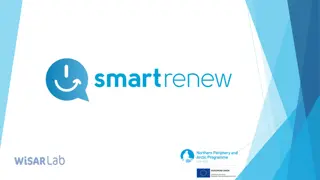Empowering Bihar with Solar Micro Grids for Renewable Energy Transition
Providing clean, reliable, and affordable power to the underprivileged in Bihar, India through a Solar Micro Grid Network. Addressing the challenges of rural electrification and the untapped market for off-grid distributed energy, this initiative aims to improve access to electricity and reduce reliance on kerosene lighting. By utilizing solar technology, the project offers a viable solution to enhance energy sustainability and economic opportunities in the region.
Download Presentation

Please find below an Image/Link to download the presentation.
The content on the website is provided AS IS for your information and personal use only. It may not be sold, licensed, or shared on other websites without obtaining consent from the author. Download presentation by click this link. If you encounter any issues during the download, it is possible that the publisher has removed the file from their server.
E N D
Presentation Transcript
Transition to Renewable Energies through Mini-grids Providing access to clean, reliable and affordable power to the poor in Bihar (India) through Solar Micro Grid Network MES: 2013 - Micro Perspectives for Decentralized Energy Supply February 28th2013 Saurabh H. Mehta, India Energy Simplified (Kyrion Technologies ) Berlin, Germany
Rural Electrification in India: Current Scenario 26 % population : no access to grid electricity 35 % relies on kerosene for lighting (inefficient, unhealthy & unsafe) $2 billion/yr untapped market in off-grid distributed energy Av off-grid rural household spends 120 / month ($ 2.25) Very slow rate of electrification Technical & economical reasons Does not guarantee access to electricity Off-grid demand is unmet Use of kerosene, diesel & disposable batteries Market imperfections, creating opportunities for social ventures to provide solutions 2 Solar Micro Grid Network in India
India Kerosene Lighting Market More than 50% of the market in 4 States Solar Micro Grid Network in India 3
Electricity Scenario in Bihar (India) Statistics Population (3rd/27) : 103 million ; 9% , Area (12th/27): 94,163 sq km ; 2.8 % Per capita consumption: 95 units (National average: 717units) Transmission & Distribution Losses : 51% Villages electrified : 53 % Population with no access to electricity: 85 % Recent change in government Improved law and order Emergence of enterprises in various sectors Strong market opportunity for off-grid energy solution Solar Micro Grid Network in India 4
Finding Solutions Solution Advantages Issues Service model (maximum client coverage) Grant driven Lack of ownership (rental)- Maintenance Dependency on station Solar charging station Ownership Independence Limited service Low incentives for sales team Solar portable lights Solar home systems Satisfactory services High capital cost Difficult to access finance Sales margin Solar Micro Grid Network in India 5
Lessons Learnt People are willing to spend 120 ($2.25 ) p.m. for meeting their basic lighting & mobile charging needs. Consistency in supply - directly linked to revenue collection Mistrust in RETs Poor after sales services by many suppliers Need for permanence Not comfortable to pay upfront, but willing to pay per use Grid like solution required (maximum clients) Conclusion Solar Micro Grid Network in India 6
Solar Micro Grid (Design) Village level ,centralized generation and distribution Reliable AC power supply to 175 HHs Training and employing local youth : O&M Village energy committee : governance Micro grids tailored to the specific needs 3 room lights and (six hours per night) Mobile phone charging Facility Owned by every HH Entertainment (inbuilt music player) Solar Micro Grid Network in India 8
Implementation Process Identification Social Process Installation Training Solar Micro Grid Network in India 9
Setting up of Solar Micro Grid 10 Solar Micro Grid Network in India
Tackling Operational Issues Abuse of system Underground transmission and load checkers Securing of equipment in locked cabinets and hardware in a locked room. System Maintenance Further improved by a network of micro grids, while also reducing the CAPEX and OPEX Train local people Regular visits by technical supervisors Monitoring Incentivizing local NGO Vs Remote monitoring Regular payment collection Currently being addressed by incentivizing operators Manual switches Vs Software locks Weather issues (Insufficient charge in batteries) Diesel Generator - Hybrid system Solar Micro Grid Network in India 11
Operational Arrangement- Solar Micro Grid Network Capital MNRE : CFA Corporate Investors Local Entrepreneurs Local NG0 Managing all the operations of the plant and monitoring them Maintenance Project Steering Committee Spare parts & stock material Identify, Train & Monitor Network of 12 solar micro- grids having 12 operators and 12 village energy committees Technical Resource centers with 2 technical supervisors Receive feedback & make change as required 12 Solar Micro Grid Network in India
Benefits of Solar Micro Grid Rural Users Cash saving : 400 - 600/year ($10 /year) Clean, reliable & affordable power Environment & Health GHG emission reduction : 8,000 ltrs of kerosene Reduced indoor air pollution Livelihood opportunity Building capacity and giving employment locally New livelihood opportunities Developer Fast implementation & quicker ROI Easier replication Solar Micro Grid Network in India 13
Challenges Village Level Barriers Program Level Barriers (Scaling up) Corruption at various levels Adverse living conditions Skilled manpower Demand based designing Poor infrastructure & Inaccessible sites Access to funding Regional Level Barriers Reliable suppliers for system components Technical complexities Solar Micro Grid Network in India 14
Exploring Solutions Technical Solutions Sensor Networks for disconnecting users Remote monitoring Customized Designs Smaller grids (DC based) SHSs coupled with SMG Standardizing technical training Entrepreneurship training Building capacity of local NGO Training System Enhancement Hybrid system to overcome supply side problem Extension of the system to meet the rising demand Interconnecting micro grids Solar Micro Grid Network in India 15
Thank You Saurabh H. Mehta, INDIA saurabh.mehta@kyrion.biz Energy Simplified , Kyrion Technologies www.kyrion.biz







